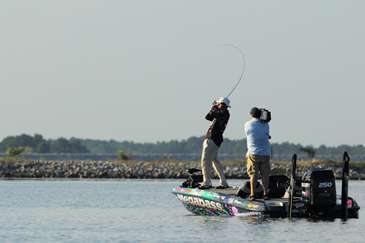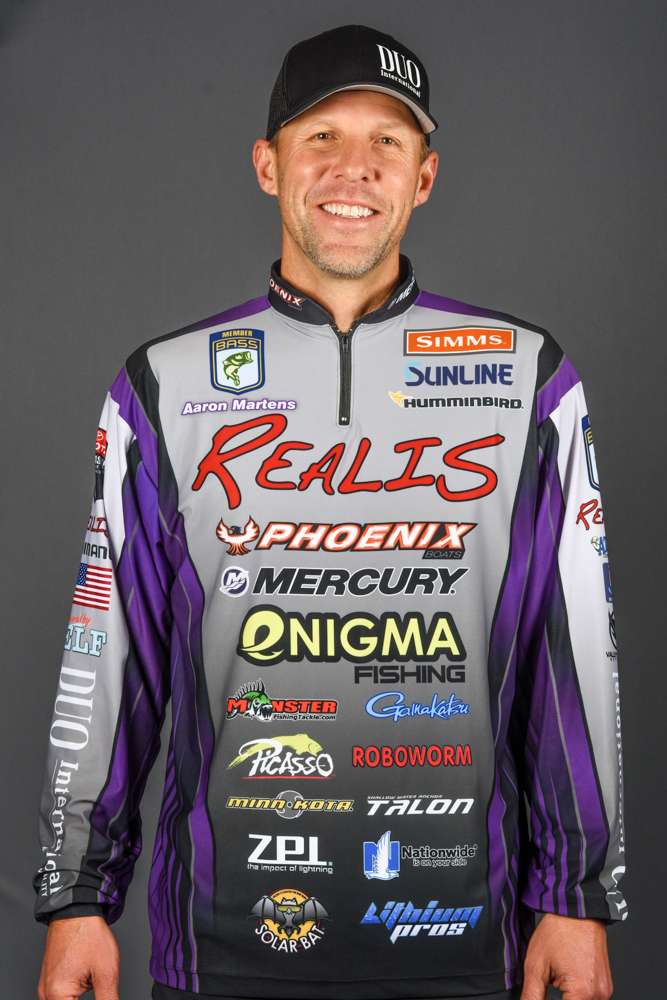
Hooks are one of the most basic parts of your fishing tackle, and yet many anglers treat them as if they were unimportant. They worry endlessly about the size, action and color of their baits but hardly give a thought to what kind of hook it carries. That's a mistake.
To be fair, most modern lures come with pretty good hooks. But pretty good isn't the standard we want to meet. We want a hook that'll give us an edge, one that'll allow us to put a couple extra bass in the livewell over the course of the day.
Here's how I break things down:
Crankbaits
1. In general, I use heavy tackle when I fish with crankbaits. I almost always upsize my hooks one size with 2X round bends. They have heavier wire, a wider gap and a bigger barb. All that works together to keep the hook in the fish's mouth during the fight.
One size up with a crankbait is enough. Bigger than that tends to kill the action of the lure. That doesn't help you catch anything.
2. When my bass are short striking or just nipping at my crankbait, I'll upsize but use a medium-wire EWG style. That seems to hook them better. You'll lose a few with this hook, but that's better than never hooking them at all.
3. Sometimes I'll use a shorter shank hook, but I personally think that's overblown. Ordinary shank lengths seem to work fine, for most lures anyway. (There are a few exceptions. If you have trouble with your replacement hooks tangling, go with a shorter shank. That'll usually solve the problem.)
Topwater
1. Most topwater plugs have hooks that are too small and too light. I upsize my topwater hooks two full sizes, especially on bigger lures like Zara Spooks and Pencil Poppers. This increased size will not only help you keep the hook in the fish's mouth during the battle, but it'll also help hook fish that are slapping at your lure.
An O'Shaughnessy bend is the best, by far. Gamakatsu makes a 4X O'Shaughnessy that's perfect for topwater applications over heavy cover when you need to use brute force to move a fish out.
2. A lot of topwater lures have their hooks attached with fittings that are screwed into the lure. I replace the factory hooks by cutting them off. I hang the new hooks with a tiny, titanium split ring to the original fitting. They're plenty strong and you don't have to remove the screws.
If you start losing a lot of fish, put two titanium split rings together like a chain and then hang your hook. That'll keep the fish from getting leverage against the hook and lure during the fight.
Jerkbaits
I usually upsize my jerkbait hooks, too, but you have to be really careful when you do it. A hook that's too light will let the bait rise; a hook that's too heavy will make it sink. And sometimes when you change to bigger hooks, the longer shanks or wider gaps will cause the hooks to tangle when the lure stops quickly.
Always test a jerkbait after you change the hooks. You can really mess one up if you don't know what you're doing.
Jigging Spoons
Most spoons come with hooks that are too light. I always upsize my hooks with heavy-wire models. The bigger barbs are more secure in deep water.
As you can see, I'm a fanatic when it comes to hooks. I never launch my boat without a full compliment of replacement hooks. I keep them on top, inside my storage compartments, where I can get to them quickly. On a typical day, I'll replace at least a half-dozen — sometimes a lot more than that.
Note that I said "replace." I do not sharpen my hooks with a file. Modern hooks — I use mostly Gamakatsu — are chemically sharpened or sharpened with a laser. They're sticky sharp. You can't get that kind of point with a file. Besides, if a point is bent, it's been weakened. It might break at a critical moment during the fight.
Mess around with your hooks this year, if you can. You'll be surprised at what a new hook can do for an old lure.





